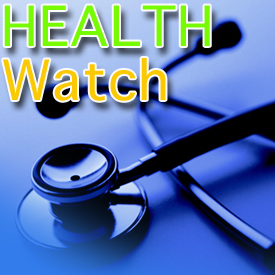

 Dangers of antibiotic prescriptions cited
Dangers of antibiotic prescriptions citedBlackdoctor.org
The majority of antibiotic prescriptions for U.S. seniors and Black and Hispanic Americans are inappropriate, a new report reveals.
For the study, researchers analyzed federal government data on more than 7 billion outpatient visits to doctors’ offices, hospital clinics and emergency departments nationwide between 2009 and 2016.
Nearly 8 million visits (11%) led to antibiotic prescriptions, the researchers reported at a meeting of the European Congress of Clinical Microbiology & Infectious Diseases in Lisbon, Portugal. (Research presented at meetings should be considered preliminary until published in a peer-reviewed journal.)
Patients not getting treated properly
“Our results suggest that Black and Hispanic patients may not be properly treated and are receiving antibiotic prescriptions even when not indicated,” says study leader Dr. Eric Young, of the University of Texas Health Science Center in San Antonio.
“We know that physicians typically send patients home with antibiotics if they suspect their symptoms may lead to an infection,” Young explained in a meeting news release. “This practice becomes more common when patients are unlikely to return for a follow-up visit (i.e., no established care within a clinic or hospital system), which more frequently happens in minority populations.”
Antibiotic prescribing rates were highest in Black and Hispanic patients (122 and 139 prescriptions per 1,000 visits, respectively), the study found. They were also high in patients under age 18 and females (114 and 170 prescriptions per 1,000 visits, respectively).
In all, 64 percent of antibiotic prescriptions for Black patients, 58 percent of those for Hispanic patients, 74 percent of those for people aged 65 and older, and 58 percent of those for males were inappropriate, the researchers reported.
Inappropriate prescriptions were most often written for conditions not caused by a bacterial infection, such as non-bacterial skin conditions, viral respiratory tract infections and bronchitis, the study found.
The dangers of inappropriate prescribing
The findings raise questions about the effectiveness of efforts to reduce inappropriate antibiotic prescribing and underscore the need to redouble efforts to cut down on that in primary care, the study authors said.
“In older adults, inappropriate prescribing in primary care is associated with a wide range of adverse outcomes, including emergency hospital attendances and admissions, adverse drug events and poorer quality of life,” Young says. “Our results underscore that strategies to reduce inappropriate prescribing must be tailored for outpatient settings.”
Overuse of antibiotics has led to resistant bacteria that are becoming more difficult, and sometimes impossible, to treat.
Antibiotic use is far higher in the United States than in many other countries, despite efforts to reduce inappropriate prescribing. Outpatient prescribing accounts for up to 90 percent of antibiotic use in the United States, and nearly 202 million courses of antibiotics were dispensed to outpatients in 2020, according to the U.S. Centers for Disease Control and Prevention.
How to avoid inappropriate prescribing
When you are prescribed a medication by your doctor, you can be proactive by doing the following:
- List all medications you are taking, along with the intended purpose of each medication. If the purpose of a medication is to control a sign or symptom, take note of when the symptom was last checked on, and how it’s been doing.
- Check to see if any of the medications are on the Beer’s list. Every few years, the American Geriatrics Society (AGS) updates its list of medications that older adults should avoid or use with caution. You can check out the list here.
- Check for signs of over-treatment, especially for high blood pressure and diabetes. For example, over-treatment of high blood pressure can cause an older adult’s blood pressure to be low, especially with standing.
- Check for drug interactions.
